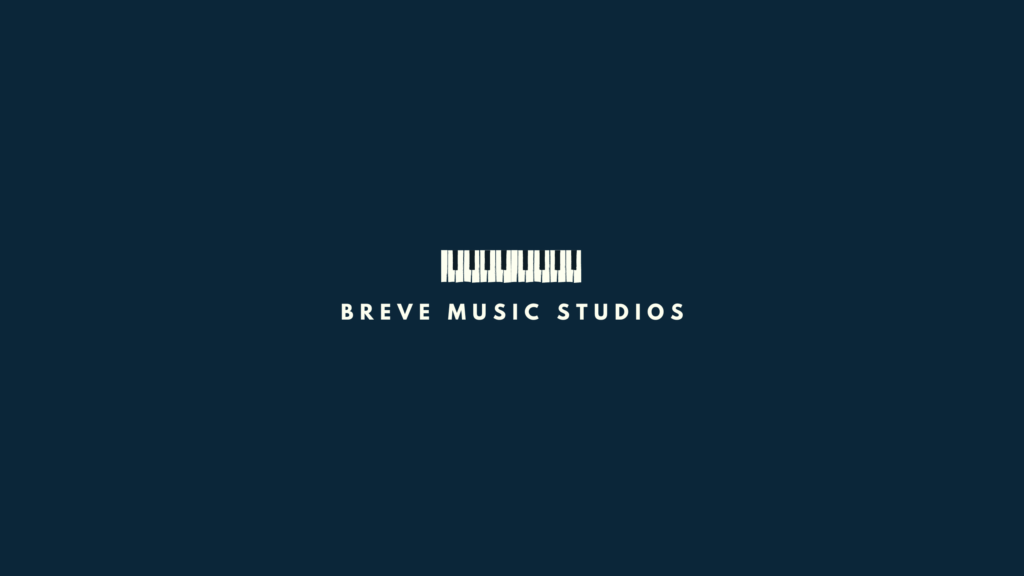Table of Contents
Introduction
In the contemporary, fast-paced world of music and digital media, landing successful sync placements is instrumental in amplifying an artist’s reach and relevance. Intertwining your musical creations with visual media like films, commercials, and TV shows not only boosts your exposure but also provides a lucrative revenue stream.
However, the path to securing sync placements demands a solid understanding of music copyrights, a knack for producing versatile and high-quality music, and a deep-rooted grasp of the current market and its audience. Add to this, networking skills and industrious pitching can prove to be the pivotal elements in your success narrative.
Music Copyrights & Publishing
Understanding Music Copyrights and Publishing
The first step to getting sync placements for your music lies in understanding the legal aspects of your creations. This specifically involves learning about music copyrights and publishing. Music copyright law offers a legal framework that protects your music from unauthorized use and gives you the right to profit from your work.
What is Music Copyright?
Music Copyright is the exclusive right of the composer or author of a musical work to prevent others from using their work without permission. In simple words, by having copyright over your music, it means your music is your property and no one else can use or reproduce it without your consent.
How to Obtain Music Copyright?
Obtaining music copyright is typically automatic when your original work is put in a tangible medium, such as writing it down or recoding it. However, to enforce your copyright, you would need to register your work with the U.S. Copyright Office. The application can be done online and requires a minimal fee.
Understanding Music Publishing
Music publishing involves activities that ensure composers and songwriters receive payment when their music is used commercially. As an artist, your music publisher will deal with the business aspect, including collecting royalties and seeking opportunities for your music to be used in a commercial setting such as films, TV shows, or ads.
Importance of Music Publishing in Sync Placements
Music publishing is crucial in securing sync placements because it ensures that you get compensated every time your music is used. Whether your music is placed in an advertisement, a film, or a TV show, a music publisher will ensure that you get your fair share of the profits.
Securing Clear, Unambiguous Ownership of Your Music
Before attempting to secure sync placements for your songs, it is critically important to have a clear understanding of who owns the rights to the song. All legalities around the ownership must be addressed to avoid any future conflicts. This is because ambiguity or disputes regarding the ownership of a song can potentially discourage music supervisors from using your song.
Taking Your Next Steps
Once you have understood music copyrights and publishing, and secured a clear ownership of your music, now you are ready to approach music supervisors or sync agencies. While choosing a sync agency, look for one which is well-networked within the industry, and has a reputation for fair and prompt payments.
Creating High-Quality and Versatile Music
The Art of Creating High-Quality Music
If you aspire to get your music placed in a film, TV show, advertisement, or any other type of media, the first and foremost necessity is ensuring the music you create is of high quality. This doesn’t simply mean that the music needs to sound good, it means that the production, mixing, and mastering all need to be professional level.
Video and audio are twins; listeners need to feel that the music enhances the scene, not detracts from it. Hence, rough edges in your recording or noisy vocals can spoil the vibe and bring viewers out of the moments. So, strive to create crisp, clean, and well-balanced tracks.
Many home producers tend to ignore aspects like dynamic range, overcompensating for poor acoustics, and many more, leading to a substandard final product. It’s worth investing time in learning proper mixing and mastering techniques, or working with a professional engineer who can help your music sound the best it can be.
Upon ensuring you have music of excellent quality, it’s time to make sure it fits a variety of scenarios.
Versatility: The Key Ingredient
Sync placements are all about complementing a scene, a mood, or a moment. The more versatile your music is, the greater chance it has of fitting into various kinds of media. A song that can be interpreted in several ways or that speaks to universal human emotions can find a home in numerous types of scenes, from poignant moments in drama series to climactic scenes in a film.
Experiment with various tempos, instruments, genres, and moods. Keep your music diverse. An album containing acoustic ballads, upbeat pop, moody electronica, and mellow jazz is far more likely to catch the attention of music supervisors than one-dimensional offering.
That said, you still need to stay true to your core artistic identity; versatility should not come at the cost of losing your unique musical voice. The aim is to showcase different shades of your creativity, presenting your music in various lights.
Patience and Persistence: The Silent Warriors
The world of sync placements is vast and often fiercely competitive. Persistence and patience are key attributes when breaking into this market. You are likely to face numerous rejections and dead-ends before securing your first sync deal. Do not take these setbacks to heart.
Remember, your music might not be right for their project at the moment, but that does not outrightly mean your music is bad. It’s essential that you keep pushing, keep improving, keep networking, and most importantly, keep creating. Soon enough, the right project will come along, and your music will find its home.
Getting your music placed for sync can be a challenging but rewarding journey. However, by focusing on creating high-quality, versatile music, you will set the stage for success. Keep faith in your music, keep patience in your backpack, and keep marching forward.
Understanding the Market and Audience
Understanding the Sync Market
The first step to scoring sync placements is understanding the current market. Start by studying what types of music are currently in high demand for these placements. Look at popular tv shows, movies, or advertisements to see which kind of music dominates the scene. Is it upbeat pop tracks, melancholy acoustic tunes, or perhaps thrilling orchestral scores? Just like any industry, music for sync has trends – be sure to keep your finger on the pulse.
Keep in mind the diverseness in the type of content that requires music. From YouTube videos and podcasts to mainstream media like TV shows, films, and commercials – each category has its peculiar demand. The more conversant you are with each section of this market, the better you can tailor your music to meet the demand.
Know your Audience
Once you’ve begun to understand the market trends, take it a step further: get to know your audience. Yes, music supervisors are the ones that ultimately choose your track, but they’re also trying to please their audience. So who is listening to the soundtrack of that movie or show? Who is the target audience for that ad? Knowing these details will help you carve out a niche for yourself in the sync industry.
Listen to the tracks which have been placed within those contexts and ask yourself why they work. What do they add to the scene and why might they appeal to that particular demographic? Having these insights will make your music more appealing and will boost your chances of securing a sync deal.
Research and Understand Media Trends
Film, television, and advertising industries often follow certain trends. These changes can be thematic or stylistic, creating demanding shifts in the kind of music they require. For example, if adventure fantasy series are prominent, they might require grand, epic orchestral music. Similarly, a surge in romantic comedies might increase demand for light-hearted, quirky acoustic tracks.
To stay ahead, be sure to follow entertainment news, updates, and release schedules. This way, you can anticipate the need and have a suitable catalog of music ready before the trend hits the peak.
Remember not just to understand the trends but also what makes the music work within the scene. The mood, pace, instrumentation, lyrics (if any) – they all play a crucial role.
Now Compose or Choose Wisely
After understanding the market, your audience, and media trends, it’s time to act. If you are composing new tracks, ensure they fit into these findings. If you already have an array of music, sift them thoughtfully while pitching for placements.
By using these insights, you will conquer your path to securing lucrative sync placements.

Networking and Pitching
The Art of Networking for Sync Placements
The path to successful sync placements begins with one crucial step – networking. As an industry expert, you understand that building and growing professional relationships are vital. These relationships set the stage for opportunity creation where your music can be heard and appreciated.
Let’s think of networking as an ongoing conversation with the influential players in the film, TV, and advert industry. Each interaction is an opportunity to share a part of your narrative that has the potential to resonate with their needs. Here are some steps you can take to cultivate this fertile ground of opportunity:
- Identify Key Players: Begin by researching and identifying music supervisors, decision-makers, and other influencers within the industry. This does not mean randomly reaching out to everyone but tailoring your focus to those whose style or projects align with your genre of music.
- Reach Out With Meaning: Personalize your interactions. Don’t just ask for what you want; instead, add value to the conversation. Show genuine interest in their projects and provide thoughtful input that can help them in their work.
- Stay Consistent: Networking isn’t a one-time job, it requires consistent and sustained efforts. Take the time to follow up, share updates on your work, and always express gratitude for their time and feedback.
The Golden Elevator Pitch
Your elevator pitch needs to be a compelling narrative, succinctly summarizing what you do and why someone should consider your music for their project. Use these guidelines to perfect your pitch:
- Problem Solution: Identify a common problem in their work and offer your music as a solution. This approach will not only show your empathy but also highlight your unique selling proposition.
- Brief Yet Impactful: Your elevator pitch should be concise, ideally under a minute. Yet, it should clearly convey your talent and the distinctive qualities of your music.
- Passion and Professionalism: Inject enthusiasm into your pitch but combine it with an air of professionalism. Showcase your passion for your craft but also give assurance of your reliability to deliver on time and maintain a professional relationship.
Leverage Music Libraries, Placement Services, and Sync Agents
Don’t miss out on the opportunities provided by music libraries, music placement services, and sync agents. Here’s how you can use these tools to your advantage:
- Submitting to Music Libraries: Music libraries act as middle-men, connecting composers with music supervisors. They are always on the hunt for fresh and appealing tracks. Make sure your submission stands out and meets their requirements.
- Partnering with Music Placement Services: These services specifically target supervisors for film, TV, and ads, pitching relevant tracks for sync placements. Having your music in their catalogue can significantly increase your odds of landing a placement.
- Working with Sync Agents: Sync agents have direct connections with music supervisors and deal with the administration and legalities of placing songs. Forming partnerships with such agents can lead to multiple placements.
Conclusion
Remember, the road to successful sync placements is less about hard sells and more about building relationships, tailoring pitches, and leveraging appropriate tools and services. Stay the course, continue generating quality music, and the opportunities will come.

Additional Reading
Now that you’ve learned about the most popular music jobs, take some time to check out our other articles:
- Popular Music Industry Careers
- 7 Best Percussion VSTs for Music Producers
- 7 Essential Music Production Tools Under $100
- Comprehensive Guide to the Fundamentals of Music Theory
- 10 Most Popular Music Jobs
Breve Music Studios publishes music to Spotify, YouTube Music, Amazon Music and more. Follow our pages on Facebook, Instagram, Twitter, TikTok, and YouTube.
Listen to our ensembles: Breve Orchestra, Breve Music Ensemble, Breve Low Brass Ensemble, Breve Woodwind Ensemble, and Jermaine Harris on Spotify.

